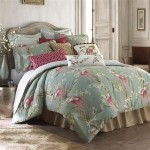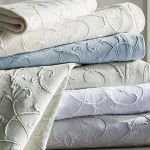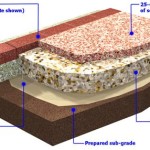Good Quality Bedding Thread Count: Essential Aspects
Thread count is a crucial factor to consider when selecting bedding, as it directly impacts its quality, durability, and comfort. Understanding the essential aspects of a good thread count empowers individuals to make informed decisions that enhance their sleep experience.
This article delves into the primary considerations when evaluating bedding thread counts, ensuring a restful and indulgent slumber every night.
### 1. Material and Yarn QualityThread count refers to the number of threads woven into a square inch of fabric. However, it is equally important to consider the fiber content and yarn quality that contribute to a thread's strength, softness, and breathability.
High-quality bedding typically uses natural fibers like cotton, linen, or silk, renowned for their durability and comfort. Furthermore, long-staple fibers produce stronger and more resilient yarns, resulting in long-lasting and tear-resistant bedding.
### 2. Weaving TechniqueThe weaving technique significantly influences the thread count's impact on the fabric's texture and feel. Plain weave, the most common method, creates a simple and durable fabric, while sateen weave yields a lustrous and smooth surface.
Threads with a higher twist per inch produce a denser, more wrinkle-resistant fabric. However, a balanced twist-to-thread ratio ensures both comfort and durability.
### 3. Single-ply vs. Multi-ply YarnsSingle-ply yarns are made from individual strands of fiber, while multi-ply yarns consist of multiple strands twisted together. Multi-ply yarns, commonly referred to as combed yarns, provide superior strength, durability, and a smoother surface.
The choice between single-ply and multi-ply yarns depends on the desired fabric properties. Single-ply yarns offer breathability and a more relaxed feel, whereas multi-ply yarns provide enhanced durability and a luxurious appearance.
### 4. Thread Count RangeWhile thread count is an important indicator of quality, it is not the sole determining factor. The optimal thread count range for bedding depends on personal preferences and sleep habits.
Thread counts typically range from 200 to 1000 or more. Higher thread counts generally indicate a softer, more luxurious fabric, but they may also be less breathable. Lower thread counts offer breathability and a cooler sleep experience.
### 5. Comfort and MaintenanceUltimately, the best thread count for bedding is the one that provides the most comfort and ease of maintenance. Consider factors such as climate, sleep preferences, and desired feel when making a decision.
High-thread-count bedding may require more delicate care, such as dry cleaning or handwashing. Conversely, lower-thread-count options may be more durable and machine-washable.
### ConclusionUnderstanding the essential aspects of good quality bedding thread count empowers individuals to select the perfect fabric for their needs, ensuring a comfortable and restful sleep. By considering factors such as material, weaving technique, yarn quality, and thread count range, one can make an informed decision that enhances their overall sleep experience.
Whether opting for the luxurious softness of high-thread-count bedding or the breathability of lower-thread-count fabrics, understanding these key considerations ensures a bedding choice that provides both comfort and durability.

What S A Good Thread Count For Sheets Wirecutter

High Thread Count Sheets What Does It Actually Mean Choice

What S A Good Thread Count For Sheets Wirecutter

What Does Thread Count Really Mean Howstuffworks

What S The Difference In Thread Count Sheets High Vs Low Eluxury

Explaining Thread Count And Bedding Linen Quality

Everything You Need To Know About Bedding Thread Count

What Is The Minimum Thread Count In Bedsheet Spaces

Thread Count Guide What Does It Mean For Sheets Peacock Alley

Egyptian Cotton 230 Thread Count Duvet Cover M S Collection








